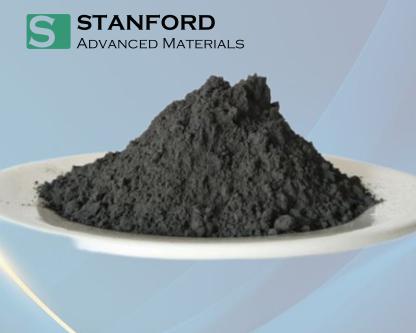- Catalog No.YM6684
- CompositionsYttrium Nitride
- Chemical FormulaYN
- CAS Number25764-13-0
- AppearanceBlack powder
- Purity99.9%


| Property | Value |
|---|---|
| Composition | Yttrium Nitride |
| Chemical Formula | YN |
| CAS Number | 25764-13-0 |
| Molecular Weight | 102.92 g/mol |
| Appearance | Black powder |
| Purity | 99.9%, customizable |
| Particle Size | -100 Mesh, -200 Mesh, customizable |
Note: Specifications are based on theoretical data. For tailored requirements and detailed inquiries, please contact us.
Yttrium Nitride (YN) is a high-performance ceramic material renowned for its superior physical, chemical, and thermal properties. Crystallizing in a rock-salt-type cubic structure, YN delivers excellent mechanical strength and structural stability. Its outstanding thermal stability ensures it remains resilient at extremely high temperatures and withstands thermal shock, making it perfect for use in demanding environments.
Key Features:
Overall, Yttrium Nitride’s blend of mechanical strength, chemical resistance, thermal endurance, and electrical conductivity makes it a versatile material for advanced technological applications.
Semiconductors and Electronics:
Ideal for high-temperature semiconductors and conductive ceramic components due to its electrical conductivity and thermal stability.
Protective Coatings:
Utilized in coatings for tools, cutting surfaces, and components exposed to harsh environments, benefiting from its high hardness and corrosion resistance.
Nuclear Technology:
Suitable for nuclear fuel cladding and structural components in reactors, thanks to its thermal and radiation stability.
Optoelectronics:
Employed in infrared detectors and high-temperature photonic devices, leveraging its electronic and optical properties.
High-Temperature Structural Materials:
Used in aerospace components, furnace parts, and other applications requiring resistance to thermal shock and oxidation.
Catalyst Support or Additive:
Acts as a support or modifier in catalytic systems that demand high-temperature durability.
SMC ensures secure and customized packaging tailored to your specific needs:
Small Quantities:
Packaged in sturdy PE (polyethylene) boxes, available in 500g per box.
Large Quantities:
Available in 1000g vacuum-sealed bags for enhanced preservation.
Customized Packaging:
Options include cartons, wooden boxes, or bespoke packaging solutions to ensure optimal protection during transit.
For special packaging requirements, please contact us.
Chemical Composition Analysis:
Ensures purity using techniques like GDMS or XRF.
Mechanical Properties Testing:
Evaluates hardness and abrasion resistance to confirm material performance.
Dimensional Inspection:
Verifies particle size distribution to meet specified mesh requirements.
Surface Quality Inspection:
Detects defects such as impurities or inconsistencies through visual and microscopic examination.
Electrical Conductivity Testing:
Measures the electrical properties to ensure suitability for electronic applications.
For detailed testing procedures, refer to SMC’s quality assurance protocols.
Q1. How is Yttrium Nitride (YN) synthesized?
A: YN is typically synthesized through the direct nitridation of metallic yttrium in a nitrogen or ammonia atmosphere at high temperatures, ensuring high purity and crystallinity.
Q2. Is Yttrium Nitride stable in air?
A: Yes, YN is relatively stable at room temperature but may oxidize slowly in humid or high-temperature conditions, forming a protective yttrium oxide layer on its surface.
Q3. Can YN be used in electronic applications?
A: Absolutely. Its semiconducting and conductive properties make YN suitable for various electronic and optoelectronic applications, particularly in high-temperature or radiation-rich environments.
| Property | Yttrium Nitride (YN) | Aluminum Nitride (AlN) | Titanium Nitride (TiN) |
|---|---|---|---|
| Thermal Conductivity | Moderate (≈20 W/m·K) | High (≈320 W/m·K) | Low (≈29 W/m·K) |
| Hardness (HV) | ~15 GPa | ~12 GPa | ~18 GPa |
| Melting Point | ~2,670°C | 2,200°C | 2,930°C |
| Oxidation Resistance | Good (stable up to 800°C) | Excellent | Moderate |
| Electrical Conductivity | Conductive/Semiconductor | Insulator | Conductive |
| Applications | Protective coatings, semiconductors | Electronics, heat sinks | Hard coatings, decorative |
Yttrium Nitride (YN) powder is generally produced through a high-temperature nitridation process:
Starting Materials:
High-purity yttrium metal is used as the precursor.
Nitridation Process:
The yttrium metal is placed in a furnace and heated to temperatures between 800°C and 1200°C in a controlled atmosphere of nitrogen or ammonia gas.
Reaction:
Nitrogen atoms diffuse into the yttrium lattice, forming YN. The process is carefully monitored to ensure complete conversion and optimal crystallinity.
Cooling and Collection:
After the reaction, the furnace is cooled, and the resulting black or dark gray YN powder is collected.
Post-Processing:
The powder may undergo sieving or milling to achieve the desired particle size and purity, ensuring suitability for advanced applications.
This method produces highly stable, fine-grained YN powder with excellent structural and physical properties, ideal for use in various high-tech industries.

 Inquiry List
Inquiry List